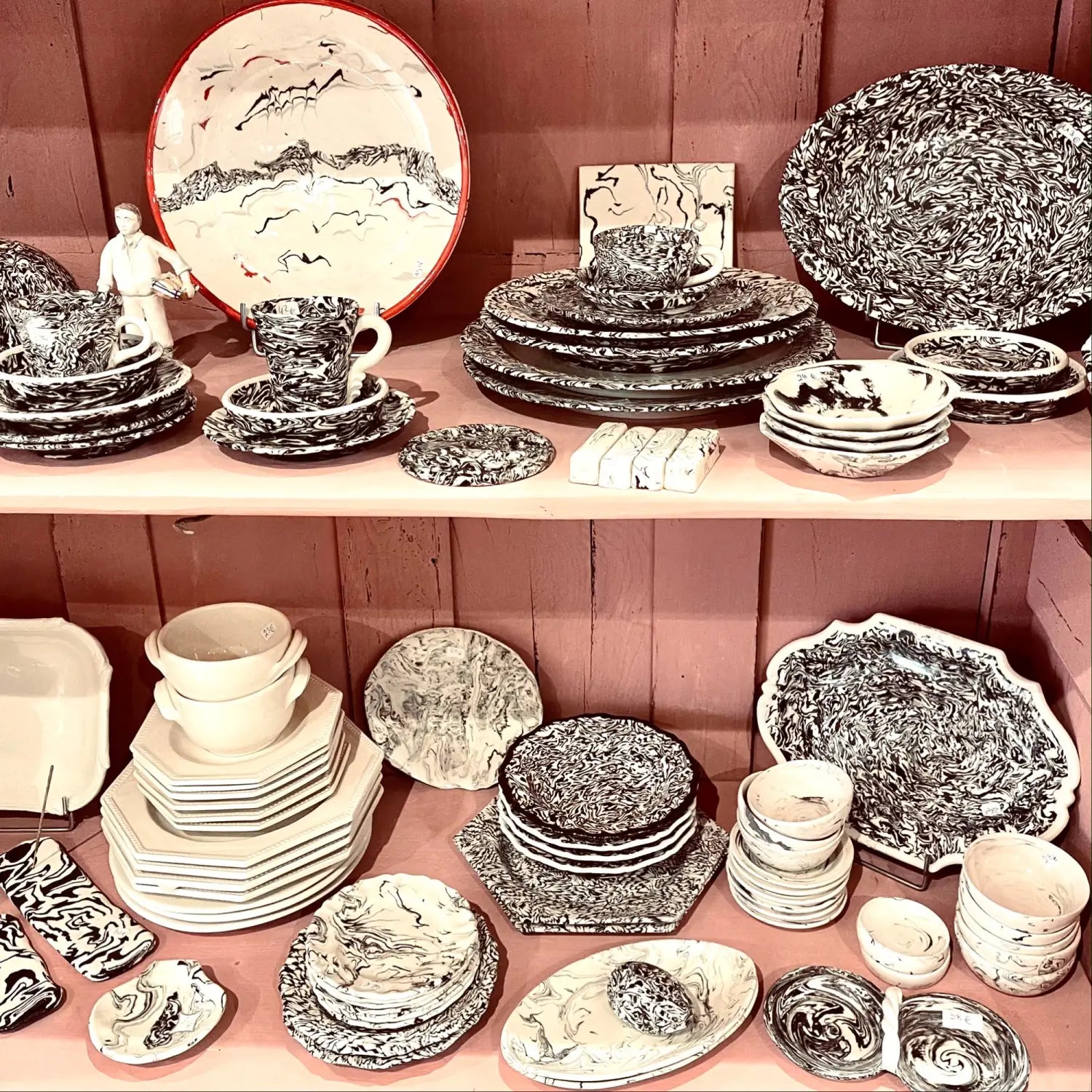
Faïence pottery from Apt
A (tragic) family affair.
The oldest examples of pottery using mixed and marbled clays were found in China and date back to the Tang dynasty that ruled between the 7th and 10th centuries. The technique resurfaced in England with Josiah Wedgwood in the 1700s and years later in several regions in France and Italy. Sadly it’s been abandoned in most places because of the intense time and skill required to make pottery using this unique process.
However, in Apt in the heart of the Luberon, we are fortunate that the tradition of mixed clay faïence pottery continues to this day. The identity of the earthenware made in Apt, known as “Aptware”, comes from the local clays and pigments used to manufacture this beautiful pottery. The dyed clays are mixed and kneaded throughout a long and secretive process. The tableware pieces are then moulded, baked a first time at a high temperature in a kiln, glazed, and then baked a second time to reveal their stunning colours. The marbleised design and colours visible on the surface of the tableware permeates the entire thickness of every piece.
In the 18th century, the Moulin family were the precursors of the fine faïence in Apt and local villages nearby. They built a reputation for the local faïence makers, whose creations were sought after for their style, finesse, and resistance. The style of their tableware changed over the years from Regency, Louis XV, Directory and eventually to a simpler style in the 19th century. The most famous dynasties of faïence makers in Apt are the Bernard and the Faucon, stretching from the 1800s to the 21st century. They successfully created new marbleised colours and restored the Louis XV and Regency ranges.
Luc Jacquel, my uncle, worked with his best friend and faïence master Jean Faucon at his workshop for over 20 years. Together, they made commissioned Aptware for many royal families, worked with prestigious designers, and stocked their pieces in exclusive stores and galleries around the world. When Jean passed away in 2001, he had no children and the only people who could keep the faïence tradition alive were Luc and his friend Benoit, who'd also worked with Jean. They created their own workshop, kept the tradition going, reached out to new markets, and trained new makers. Luc and Benoit have now also sadly passed away, and less than a handful of faïence makers still exist in Apt.
I love the faïence from Apt for their craftmanship, their style and their history. Whenever me or my family see faïence, we are both in awe of its beauty but saddened by the reminder that Luc left us so young and that we miss him so very much. At Tariette, we feel that it is almost a duty to support the local Aptware makers and promote their incredible story. We have thus decided to stock a limited amount of unique faïence pieces made by master maker Pascale Mestre. We’re incredibly fond of her creations and feel that she is continuing the amazing legacy left by Faucon and Luc’s lifetime of work. There will be more information to come on our social media and in our newsletter.



